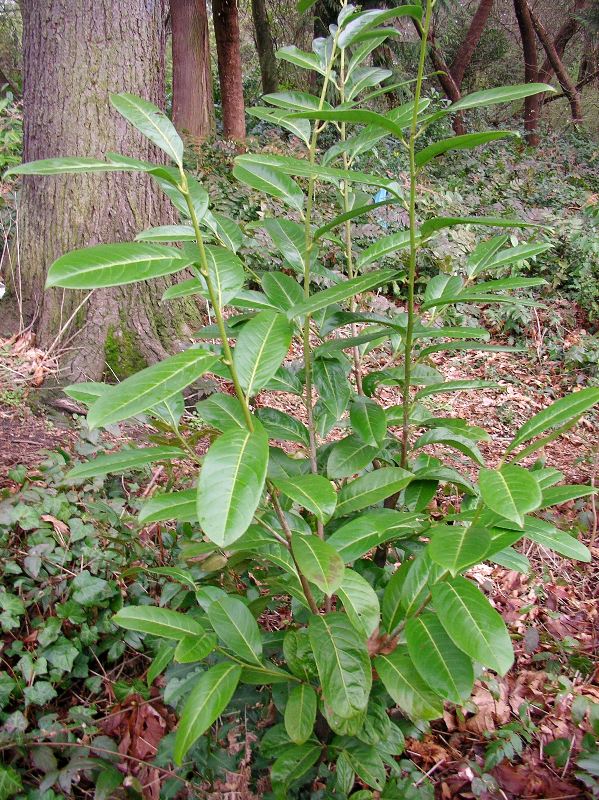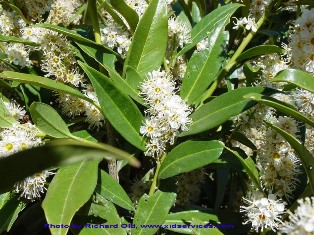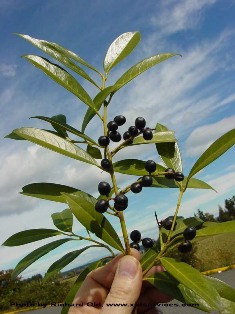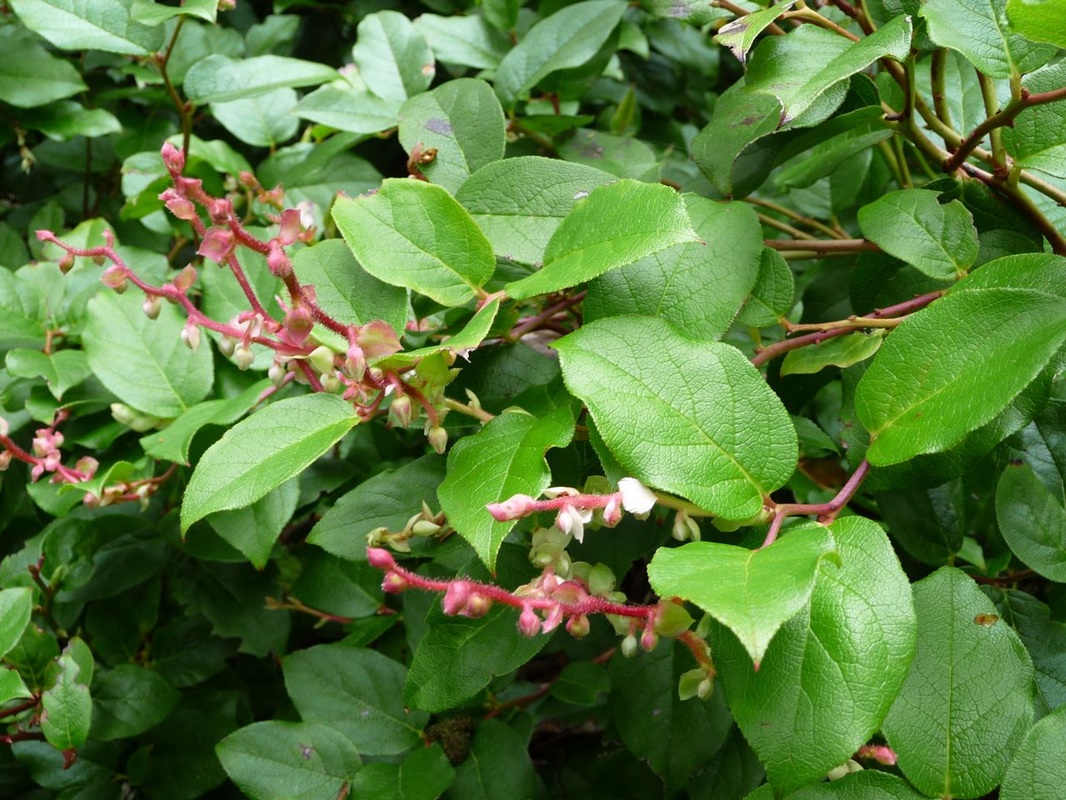Non-native: English laurel (Prunus laurocerasus)
Description: English laurel–aka cherry laurel or common laurel–is, confusingly, neither English nor a laurel, but a species of cherry native to the area around the Black Sea. (The “laurel” epithet derives from a passing similarity–in foliage and growth habit–to bay laurel [Laurus nobilis]. It is, in fact, considered a nuisance species in the UK. So much for common names.) Often planted as a hedge due to its rapid, dense growth and evergreen leaves, “English laurel” can quickly give the planter more than they’ve bargained for, reaching heights of up to 15 m (50 ft). The thick, glossy leaves are up to 25 cm (10″) long, with finely-toothed margins and prominent veins. Sweet-smelling, white flowers appear in columns (“racemes” of 30-40 flowers, each with the five petals typical of Prunus) in early summer; once pollinated, these produce small (1-2 cm, roughly 1/2″) fruits that turn black when fully ripe. Despite the promising “cherry” label, these are not palatable, and actually contain small amounts of hydrogen cyanide (also present in even greater concentrations in the seeds).
Spread: “English laurel” spreads primarily by seed, as birds and other animals eat the fruits and transport the seeds to natural areas. It may also reproduce locally by “layering,” as branches that touch the ground can root and produce new trunks. Owing to its high tolerance for drought and shade, it is able to out-compete many native forest understory plants.
Control: Young plants may be dug up or pulled by hand. Established plants will regrow after cutting if the stumps are not treated with herbicide; continuous cutting of any new growth will eventually exhaust the root system, but will require persistent attention for several years.
Native replacement: Salal (Gaultheria shallon) is a small to mid-size, evergreen native shrub that will do well in the moist soils and shady sites frequented by “English laurel.” Its unique, bell-shaped flowers are attractive to pollinators and people alike, and its berries are deliciously edible!




